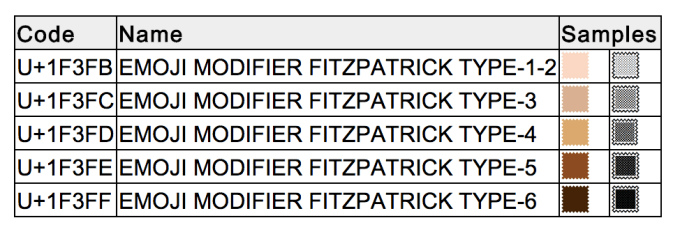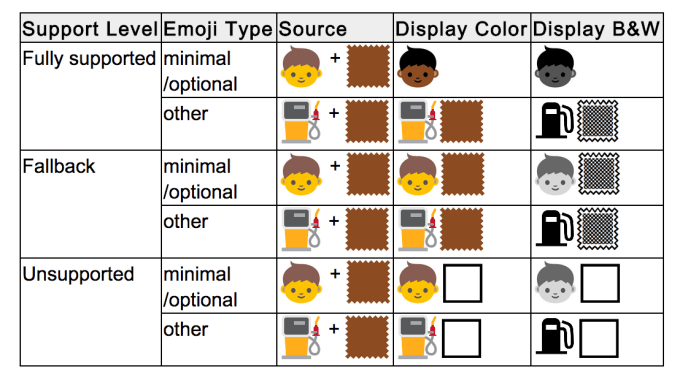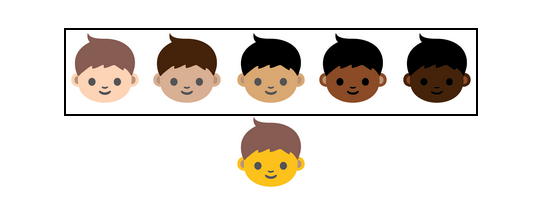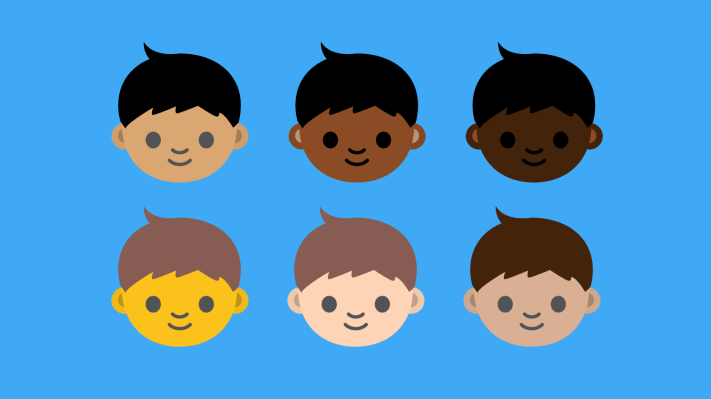Last summer, an article on Fast Company asked an important question related to the increasingly popular picture-based character set called emoji, now found on the majority of modern smartphones: Are emoji racist? The problem, the post pointed out, is that the people characters in the emoji set based on the Unicode standard tended to be overwhelmingly white. Where was the diversity? Where were people of color?
The Unicode Consortium, the industry body responsible for defining the emoji character set, is now working on changing things.
Emoji were originally based on Japanese carrier images, where the format was first used and popularized. They weren’t encoded into the Unicode Standard until 2010, but having originally grown out of a smaller geographic region, the “generic” images being used didn’t accurately reflect the diversity found elsewhere in the world.
Over time, things have progressed … slowly. Apple updated its emoji collection in 2012 to include a lesbian and homosexual couple, for example. But even then, people wanted to know, where were the black emoji?
Actor Tahj Mowry and singer Miley Cyrus even tweeted their complaints about the matter, bringing more visibility to the situation.
MTV blogger Joey Parker then went straight to the source, and asked Apple CEO Tim Cook this same question. Via its head of comms, Apple responded that its character set was based on the Unicode Standard and that Apple had been “working closely with the Unicode Consortium in an effort to update the standard.” The company agreed that further efforts to increase emoji diversity were needed.

That same Consortium has now published a draft proposal, edited by Mark Davis of Google and Peter Edberg of Apple, that would introduce a range of skin tones for the human characters among other changes.
These skin tones would be based on the Fitzpatrick scale, a recognized standard for dermatology. The proposed colors include a paler, cream-colored tone all the way up through a dark brown/black with a few variations in between. The draft introduces these five new color swatches as a way to render a single emoji showing a character with the correct skin tone. That is, you would select an emoji person and tone, and the font would show that sequence as a single glyph corresponding to those selections.


When the font can’t handle the combination, the character and the skin tone swatch would be displayed separately, showing that a skin tone was intended. A black-and-white option with stippled or hatched images is also supported when being used on non-color devices.
On some phones, like on Apple or Android smartphones most likely, this character input could be transparent to the end user, the proposal explains. That is, you may be able to long-press on a people character to bring up an option showing a palette of skin tones instead of entering the character then the color swatch separately.

These emoji modifiers would affect all people characters, including those in groups, like COUPLE WITH HEART, for example. However, the swatch would add the same color to both people characters in a group emoji. In those cases, the proposal argues that users could enter emoji for each person separately (e.g. man, type 1-2; woman, type-3) preceded by the generic, but possibly inaccurately colored, group emoji character.
The forthcoming Unicode standard (ver. 8.0) will arrive in mid-2015, but there’s no timeline as to when these specific changes will go into effect, or even if they will at this point. The proposal is currently a “work in progress” and the consortium says that its publication “doesn’t imply endorsement.” The draft can be “updated, replaced, or superseded by other documents at any time.”
In other words, it’s a proposal to update the standard, not the new standard itself. And things can change. But even if it’s a “work in progress,” it’s welcome progress nonetheless.
